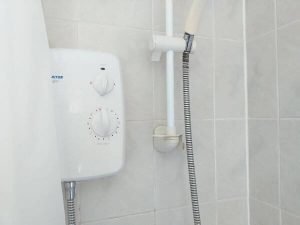As someone who loves to exercise and stay fit, I’m always looking for new ways to incorporate physical activity into my daily routine. Recently, I’ve been wondering if it’s possible to do sit-ups in bed. After all, it’s comfortable and convenient, and I’m all for making exercise as accessible as possible.
So, can you do sit-ups in bed? The short answer is yes, you can. However, there are some important factors to consider before you start incorporating this exercise into your routine. In this article, I’ll explore the benefits of exercising in bed, provide tips for doing sit-ups correctly, discuss potential risks, and offer alternative exercises you can try. By the end, you’ll have all the information you need to decide if bed exercises are right for you.
Table of Contents
- Benefits of Exercising in Bed
- Proper Form for Sit Ups in Bed
- Potential Risks and Precautions
- Alternatives to Sit Ups in Bed
- Tips for Incorporating Bed Exercises into Your Routine
- The Verdict: Can You Do Sit Ups in Bed?
- Conclusion
- FAQ
- Q: Can You Do Sit Ups in Bed?
- Q: What are the Benefits of Exercising in Bed?
- Q: How Do I Perform Sit Ups in Bed Correctly?
- Q: Are There Potential Risks and Precautions?
- Q: What are Alternatives to Sit Ups in Bed?
- Q: How Can I Incorporate Bed Exercises into My Routine?
- Q: Can I Do Sit Ups in Bed?
- Read the latest posts here:
Key Takeaways:
- Yes, you can do sit-ups in bed
- Exercising in bed offers convenience and comfort
- Proper form is crucial for effective sit-ups in bed
- There are potential risks, but these can be mitigated with precautions
- Other exercises can be done in bed for a full-body workout
- Consistency and goal-setting are important for incorporating bed exercises into a daily routine
Benefits of Exercising in Bed
Exercising in bed may seem like a lazy alternative to hitting the gym. However, it can offer a variety of benefits that are often overlooked. Not only is it convenient, but it can also be a gentle and comfortable way to start your day. Below are just a few of the many benefits of working out in bed:
- Convenience: With no need to leave your bedroom, exercising in bed is a great way to save time and eliminate excuses for not working out.
- Comfort: Soft bedding can provide support and cushioning, making it easier on joints and reducing the risk of injury.
- Improved core strength: Doing exercises such as sit-ups in bed can help strengthen your core muscles, improving your posture and reducing back pain.
- Flexibility: Bed exercises can improve your flexibility, making everyday movements easier and reducing the risk of injury.
So, if you’re looking for a convenient and comfortable way to start your day and improve your fitness, consider incorporating bed exercises into your routine. But before you start, it’s important to ensure that you are doing the exercises correctly to maximise their benefits.
Proper Form for Sit Ups in Bed
If you’re considering incorporating sit-ups in bed into your workout routine, it’s important to maintain proper form to avoid injury and get the most out of your exercise.
Firstly, make sure you have a firm and supportive mattress. A soft mattress can make it difficult to maintain proper alignment and stability during the exercise.
Next, lie on your back with your knees bent and feet flat on the bed. Cross your arms over your chest or place your hands behind your ears, keeping your elbows wide.
Squeeze your abs and lift your upper body off the bed, exhaling as you do so. Make sure to keep your chin tucked in towards your chest to avoid straining your neck. Inhale as you slowly lower your upper body back down to the bed.
Remember to keep your core engaged throughout the exercise and avoid using momentum to lift yourself up. Your abs should be doing the work, not your neck or back.
It may be helpful to start with a small number of repetitions, such as 5-10, and gradually increase as you build strength and stamina.
Overall, proper form is essential when doing sit-ups in bed. With the right technique and some patience, you can safely and effectively incorporate this exercise into your daily routine.
Potential Risks and Precautions
While there are many benefits to exercising in bed, it’s important to consider the potential risks and take proper precautions to avoid injury.
One concern with doing sit-ups in bed is the lack of stability and support compared to a traditional exercise mat. This can increase the risk of straining your back or neck during the movement.
To mitigate this risk, it’s recommended to use a firm mattress or add extra support beneath the lower back, such as a pillow or rolled-up towel. This can help provide the necessary support and stability during the exercise.
It’s also important to maintain proper form and alignment throughout the movement. This means keeping your feet flat on the bed, engaging your core muscles, and avoiding any jerky or sudden movements.
Overall, while sit-ups in bed can be a convenient and effective way to strengthen your core, it’s important to take the necessary precautions to avoid injury and maximize the benefits.
Alternatives to Sit Ups in Bed
If sit-ups aren’t your thing, or you’re looking to mix up your bed workout routine, there are plenty of other exercises you can do in the comfort of your own bed.
Leg Lifts: Lying on your back with your legs straight, lift both legs together to a 45-degree angle and hold for a few seconds before lowering back down. Repeat for a few sets of 10 reps.
Bridges: Lying on your back with your knees bent, lift your hips towards the ceiling, hold for a few seconds, then lower down. Repeat for a few sets of 10 reps.
Planks: Lying face down on your bed, prop yourself up on your forearms, engage your core, and hold for 30 seconds to a minute. Repeat for a few sets.
Seated Knee Raises: Sit on the edge of your bed with your hands on the mattress behind you and your legs extended straight out. Lift your knees towards your chest, then lower back down. Repeat for a few sets of 10 reps.
Push-Ups: Place your hands on the mattress shoulder-width apart and lower your chest towards the bed, keeping your body straight. Push back up to the starting position. Repeat for a few sets of 10 reps.
Remember, the key to any workout routine is to switch it up frequently to keep challenging your body and prevent boredom. Try combining different exercises for a full-body workout in bed.
Tips for Incorporating Bed Exercises into Your Routine
If you’re interested in trying bed exercises, here are some tips to help you get started:
- Start small: Incorporating small bouts of activity throughout your day can be a great way to build a consistent routine. Try starting with 5-10 minutes of bed exercises in the morning and gradually increase as your fitness improves.
- Use props: While your bed can provide a soft surface for exercise, it may not offer the support and stability required for certain movements. Consider using props like pillows, yoga blocks, or resistance bands to help modify exercises and make them more effective.
- Be mindful of your body: Listen to your body and make adjustments as needed. If an exercise causes pain or discomfort, stop or modify it to avoid injury.
- Stay consistent: Making a habit of bed exercises can be a great way to stay active and improve your fitness. Try to exercise at the same time each day to build a routine and help it become part of your daily lifestyle.
Remember, it’s important to consult with your healthcare provider before starting any new exercise program. With proper form, precautions, and consistency, incorporating bed exercises into your routine can be a convenient and effective way to improve your fitness and overall health.
The Verdict: Can You Do Sit Ups in Bed?
After exploring the benefits, proper form, potential risks, and alternatives of doing sit-ups in bed, the answer is a resounding yes! Exercising in bed can be a convenient and effective way to improve core strength and flexibility, especially for those who may be hesitant to start their day with more strenuous exercises.
However, it’s important to keep in mind that doing sit-ups in bed may not provide the same level of stability and support as a flat surface, so it’s crucial to maintain proper form and alignment to minimize the risk of injury. If you experience any discomfort or pain, it’s best to consult with a healthcare professional before continuing.
Overall, incorporating bed exercises into your routine can be a great way to stay fit and healthy, particularly for those with busy schedules or limited space. By listening to your body, setting realistic goals, and staying consistent, you can enjoy the benefits of a full-body workout from the comfort of your own bed.
Conclusion
Incorporating bed exercises into your fitness routine can be a great way to start the day with a gentle workout. As we’ve seen, sit-ups in bed can be effective for improving core strength and flexibility, but it’s important to maintain proper form and use caution to avoid injury.
There are also many other exercises that can be done in bed, including leg lifts, bridges, and planks, which can provide a full-body workout. The key is to set realistic goals, listen to your body, and be consistent in your routine.
Don’t Let Convenience Stop You from Reaching Your Fitness Goals
Working out in bed may not be the most conventional method, but it can be a convenient and effective way to incorporate exercise into your daily routine. So, don’t let convenience be an excuse for not achieving your fitness goals.
With the proper precautions and techniques, you can safely and effectively work out in bed to improve your overall health and well-being.
So, why not give it a try? Your body – and your mind – will thank you.
FAQ
Q: Can You Do Sit Ups in Bed?
A: Yes, you can do sit-ups in bed. While it may not be as effective as performing them on a stable surface, doing sit-ups in bed can still provide some benefits, especially for beginners or those looking for a gentle start to the day.
Q: What are the Benefits of Exercising in Bed?
A: Exercising in bed offers convenience and comfort. Doing sit-ups in bed can help improve core strength and flexibility. It allows for a gentle start to the day and can be a convenient option for those with limited time or space.
Q: How Do I Perform Sit Ups in Bed Correctly?
A: To perform sit-ups in bed correctly, start by lying on your back with knees bent and feet flat on the bed. Place your hands behind your head or cross your arms over your chest. Engage your core and lift your upper body towards your knees, then slowly lower back down. Repeat for the desired number of reps.
Q: Are There Potential Risks and Precautions?
A: Yes, there are potential risks associated with doing sit-ups in bed. Lack of stability and support can increase the risk of injury. To mitigate these risks, consider using a firm mattress or adding extra support beneath your lower back.
Q: What are Alternatives to Sit Ups in Bed?
A: There are other exercises you can do in bed for a full-body workout. Options include leg lifts, bridges, and planks, which target different muscle groups and provide a well-rounded routine.
Q: How Can I Incorporate Bed Exercises into My Routine?
A: To incorporate bed exercises into your routine, aim for consistency and set realistic goals. Listen to your body and avoid overexertion. Start with a few minutes of exercise and gradually increase the duration and intensity.
Q: Can I Do Sit Ups in Bed?
A: Yes, you can do sit-ups in bed. While there are considerations and potential risks, doing sit-ups in bed can be a convenient and effective option for improving core strength and flexibility.
Read the latest posts here:
- Can I Run a Business from my Shed?So, can I run a business from my shed in 2024? Well, the simple answer is yes you can, but there are some things you must consider. There are issues that could cause you problems and may in certain circumstances, disqualify you from running a business from home. When it comes to the law the …
- Which is the best Capital on Tap Promo Code?Here is a Capital on Tap promo code: 2REFC237G71 that will allow you to get £75 credited to your account to spend as you wish.
- Why Are Beds So Comfortable? Unraveling the Secrets of Cozy SlumberAs someone who knows the value of a good night’s sleep, I’ve always been fascinated by the comfort that beds provide. From plush pillows to soft sheets, there’s no denying the appeal of sinking into a cozy bed after a long day. But have you ever wondered what makes beds so comfortable? As it turns …
Why Are Beds So Comfortable? Unraveling the Secrets of Cozy Slumber Read More »
- Why is the Word Bed Shaped Like a Bed? Discover the Reason!Have you ever stopped to wonder why the word “bed” is shaped like the object it represents? As a professional copywriting journalist, I have always been fascinated by the relationship between word shapes and their meanings. In this article, we will explore the intriguing mystery of why the word “bed” is shaped like a bed. …
Why is the Word Bed Shaped Like a Bed? Discover the Reason! Read More »
- Do You Give Up Your Bed for Guests? Tips & Etiquette GuideWelcome to my guide on hosting guests in your home! One of the most common dilemmas we face when we have visitors staying over is whether or not to give up our own bed. It can be challenging to balance hospitality with personal comfort, but with the right mindset and some practical tips, you can …
Do You Give Up Your Bed for Guests? Tips & Etiquette Guide Read More »
- Can You Do Sit Ups in Bed? Discover the Answer Today!As someone who loves to exercise and stay fit, I’m always looking for new ways to incorporate physical activity into my daily routine. Recently, I’ve been wondering if it’s possible to do sit-ups in bed. After all, it’s comfortable and convenient, and I’m all for making exercise as accessible as possible. So, can you do …
Can You Do Sit Ups in Bed? Discover the Answer Today! Read More »
- Hisense washing machine reviewHey there, I recently got my hands on the Hisense-WFQP9014EVM Freestanding 9 KG Front Load Washing Durable Inverter Machine and I’m excited to share my thoughts with you. This washing machine has some impressive features that make laundry day a breeze. So, let’s dive in! Pros and Cons What We Liked What Can Be Improved …
- Shower head leaking at threadsMy leaking shower head is driving me nuts. You can see a short video of it here A leaking shower head is frustrating for anyone especially if you have it constantly dripping even when the shower isn’t in use. Fortunately for me, mine only drips when I’m actually using the shower so at least I’m …
- What is the purpose of a desk mat?A desk mat protects your desk from scratches and stains, reduces noise from typing or moving objects, offers a smooth surface for comfortable writing and accurate mouse movement, and adds aesthetic appeal to your workspace. Understanding the Purpose of a Desk Mat Desk mats have tons of uses! They protect desk surfaces, muffle keyboard typing, …
- Purple Birds Unveiled: Discovering Nature’s Purple BeautiesAre you ready to embark on a journey into the amazing world of purple birds, where beauty and intrigue collide? We reveal the secrets of their enchanting plumage. Discover why their captivating presence is worth celebrating and preserving for generations to come. Introduction to Purple Birds Purple birds have long captivated the hearts and imaginations …
Purple Birds Unveiled: Discovering Nature’s Purple Beauties Read More »
- Limited Company Credit Cards: 9 things you need to knowHere we look in some detail at your options when it comes to Limited Company credit cards, and LLP credit cards. We will answer the most commonly asked questions. We will cover the difference between company and personal credit cards and answer things you want to know about eligibility checks, interest free cards, using a …
Limited Company Credit Cards: 9 things you need to know Read More »
- What are the odds of a Bunk Bed breaking?It is difficult to determine the exact odds of a bunk bed breaking because it depends on many factors. Though if used properly/sensibly then the odds are millions to one. On the other hand if you have heavy children or full grown adults bouncing around on them and treating them like a climbing frame in …
- Best Touchscreen Winter GlovesThe best winter touch screen gloves are designed to be worn in cold weather but still allow you to use your smartphone or tablet, while still wearing them. Let’s be honest the last thing you want to do when it’s freezing cold is take your gloves off to read or reply to a text or …
- Best Clothes for Dog WalkingOn winter evenings when it’s dark by 5pm, and snowing outside, it’s tempting to just stay indoors and hibernate. In the summer, when it’s hot and sultry, it can be difficult to summon up the energy to go for a walk too. Unfortunately, those of us who are dog owners don’t have that luxury. After …
- What are the best 10 types of flowers to say sorry?Here are 10 flowers that we recommend to give, to express apologies: Why roses are best to say sorry with Roses are a classic choice for expressing a variety of sentiments, including apologies. They are often associated with love, beauty, and passion, making them a suitable gift for expressing regret and asking for forgiveness. The …
What are the best 10 types of flowers to say sorry? Read More »
- How to Heat a Cold KitchenIn this article we share our best tips on how to heat a cold kitchen, with ideas and help for every budget. We also go through the most common reasons why your kitchen is cold in the first place. With peoples energy costs skyrocketing, and many struggling with the “heat or eat” dilemma, this is …
- Electrical Safety for a Secure HomeWe depend on electricity to keep us entertained, make our lives easier and stay in touch with friends and family around the world. Still, it’s a very powerful force that shouldn’t be taken lightly. Even though modern safety regulations have helped make electricity easier to use and safer to have in the home, it can …
- How Many Clothes Does a 7-Year-Old Need?Buying clothes for a child can be pretty tough. After all, they grow so quickly. No sooner have you started to put together a decent collection of outfits for them, they have suddenly outgrown them, and they need a completely new set. So, how many clothes does a 7-year-old need? In an ideal world, a …
- Can Cavapoos Be Left Alone?The small and hypoallergenic Cavapoo seems like an adorable choice for a companion, but if you are someone with a busy lifestyle, you may worry about how the dog will fare when you are not home. Cavapoos can be left alone for up to 5 or 6 hours, but they can suffer from separation anxiety …
- Is Going Hiking with a Guy a Date?There are many rules and conditions in dating, especially when the relationship first begins. What compounds awkwardness is when you’re on the fence with male friends. Then the lines become blurry and deciphering what constitutes a “date” can misconstrue for a hangout and vice versa. One such scenario is hiking. So, is going hiking with …
- Credit Card FAQ’sCredit cards are necessary in today’s society. They help pay for things that you may be low on cash for and allow you to make purchases from a distance, such as shopping online. But, if you’re new to having a credit card, you probably have several questions about using it. The article below details some …
- Bangkok MemoriesBangkok in Thailand is a city that creates memories, so if you are thinking of visiting this great city I thought sharing my memories might help inspire you. In Thai language, Bangkok has according to the Guinness Book of Records the longest city name in the world. ‘Krungthepmahanakhon Amonrattanakosin Mahintharayutthaya Mahadilokphop Noppharatratchathaniburirom Udomratchaniwetmahasathan Amonphimanawatansathit Sakkathattiyawitsanukamprasit’ …
- What are the Best Maternity LeggingsDiscover the Best Maternity Leggings 2023, for ultimate comfort and style during pregnancy. Get perfect fit and support for your bump with our comprehensive guide. I’ve updated this article with my latest research on the “best maternity leggings 2023″. When I was pregnant, I really needed to buy some comfortable clothes, so I thought I’d …
- Is Aluminium Good for Garden Furniture?A home’s outdoor space is much more beautiful and relaxing when furniture is available for family and friends. But, you want to ensure you choose the right kind so that it lasts for as long as possible while providing comfort and aesthetics. There is a plethora of materials out there and metals are often the …
- Stone Painting Kits: The 5 things you must know, revealed.Today we’re going to explain all that you need to know, to be able to create your own stone painting kits. As well as give you the important steps to be able to do it yourself. Also we’ll share some project ideas to get those inspirational juices flowing. Painting stones is a fun form of …
Stone Painting Kits: The 5 things you must know, revealed. Read More »

























